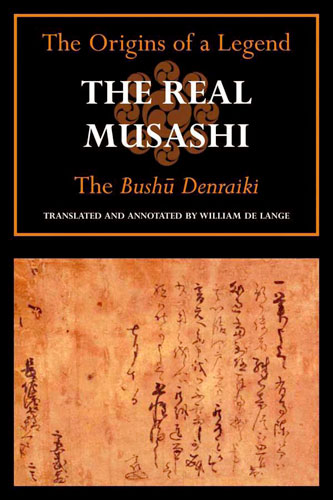
The Real Musashi: Origins of a Legend
The Bushû Denraiki
translated and annotated by William de Lange
Miyamoto Musashi (c. 1584–1645) is the most revered and celebrated swordsman in Japanese history; in Japan alone close to a thousand works have taken the ancient warrior as its subject. Unfortunately, our modern portrait of this folk hero is derived mainly from popular books, comics, and film, with little heed paid to the early denki, chronicles recorded by men who, though they had not known Musashi in his lifetime, faithfully recorded what was passed down by those who had.
The Bushû denraiki is the earliest such record still in existence. Completed in 1727 by Tachibana Minehide, the fifth generation master of Musashi's Niten Ichi school of fencing, it is the most reliable record of Musashi's life and exploits outside those from the hand of the master swordsman himself. Now, after three centuries, Minehide's insight into this enigmatic and solitary swordsman are available to the English reader. His text throws a new and refreshing light on many aspects of especially Musashi's early life—his troubled relations with his father, his first battle experience during Japan's period of unification, the sad death of his illegitimate child, and of course his legendary duel on Ganryû island. For those interested in the sword culture of Japan, this true story of its most iconic figure is essential reading.
William de Lange studied Japanese language and culture at the University of Leiden and at Waseda University in Japan. He is active as a translator and interpreter, and is a practitioner of the Shinkage school of swordsmanship. He is the author of A Dictionary of Japanese Idioms, Pars Japonica: The First Dutch Expedition to Reach the Shores of Japan, and the acclaimed three-volume history Famous Japanese Swordsmen.
144 pp, 6 x 9, Soft
11 Maps and charts
Lists of historical periods, castles, temples, shrines, battles, and rebellions
Glossary, bibliography, index
Japanese history / Swordsmanship / Martial arts
ISBN: 978-1-891640-56-8
$40.00






